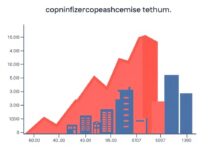What is an economic moat and why it matters for stocks

Investors should prioritize identifying companies with sustainable competitive advantages to enhance their portfolios. These advantages, such as brand strength, cost leadership, and network effects, serve as barriers against competitors, ensuring consistent profitability over time.
A thorough analysis of a firm’s market positioning reveals how its unique attributes contribute to long-term success. For instance, businesses that excel in innovation or possess proprietary technologies can maintain an edge, translating into superior returns for shareholders. Evaluating financial metrics alongside qualitative factors provides insights into a company’s potential resilience during market fluctuations.
Incorporating this understanding into investment decisions allows for smarter risk management and greater confidence in future growth prospects. Building a robust portfolio hinges on selecting firms that demonstrate clear advantages in their sectors–those capable of weathering economic storms while delivering sustained value to investors.
Identifying Types of Moats
Focus on four primary categories of competitive advantages: cost, network effects, intangible assets, and switching costs. Each type influences stock selection and valuation differently.
Cost advantages arise when a business can produce goods or services at a lower expense than competitors. Analyze operational efficiencies, economies of scale, and access to cheaper materials. Companies like Walmart exemplify this model with their extensive supply chain management.
Network effects occur when the value of a product increases as more users engage with it. Consider platforms such as Facebook or eBay where user participation enhances overall utility. Assess user growth trends and engagement metrics during your analysis.
Intangible assets encompass brand equity, patents, and proprietary technology that create a barrier to entry for rivals. Evaluate trademarks and innovations that provide exclusive rights. Strong brands like Coca-Cola leverage this advantage effectively in their market strategies.
Switching costs are the hurdles customers face when changing providers or products. Investigate industries with high customer retention due to significant investment in time or money, such as software ecosystems like Microsoft Office. This can lead to stable revenue streams and reduced churn rates.
Incorporate these insights into your stock picking strategy by aligning investments with companies that exhibit robust advantages within these categories. Conduct thorough research to identify firms poised for sustainable growth based on their competitive positioning.
Assessing Competitive Advantage
Begin with a thorough analysis of the company’s unique strengths. Investigate barriers to entry that protect its market share, such as proprietary technology, brand loyalty, or regulatory advantages. Evaluate how these factors contribute to sustained profitability and pricing power.
Next, compare financial metrics with competitors. Look for consistent higher margins and return on equity (ROE) as indicators of robust competitive positioning. Companies with superior earnings growth often signal effective competitive strategies in place.
Examine customer retention rates and satisfaction levels. High retention indicates a strong relationship between the company and its clientele, suggesting that switching costs are significant for customers. This can enhance long-term stability and revenue predictability.
Investigate the company’s innovation pipeline. A firm that consistently introduces new products or services demonstrates an ability to adapt and stay ahead of rivals. Analyze R&D spending relative to peers; substantial investment often correlates with future growth potential.
Finally, monitor industry trends and external threats. Understanding economic shifts or emerging technologies can provide insight into whether a business’s advantage is likely to endure or diminish over time. This proactive approach allows investors to make informed decisions based on potential changes in competitive dynamics.
Moat Analysis for Investors
Focus on companies with sustainable competitive barriers when selecting investments. Analyze the strength and durability of these advantages to enhance your stock picking strategy. Look for indicators such as pricing power, customer loyalty, and unique product offerings that can withstand competitive pressures.
Utilize financial metrics like return on invested capital (ROIC) and gross margins to gauge a firm’s ability to maintain its edge over time. High ROIC relative to peers signals effective management and a resilient position in the market.
Evaluate qualitative factors as well, including brand recognition and network effects. Companies that benefit from strong branding often enjoy repeat business, while those with robust network effects create value through increased user engagement over time.
Keep an eye on industry dynamics; sectors with lower entry barriers may present risks. Continuous monitoring of competitors’ actions is crucial–disruptive innovations can erode established positions rapidly.
Incorporate scenario analysis into your investment approach. Assess potential shifts in consumer behavior or technological advancements that could impact a company’s standing. This proactive stance will help identify vulnerabilities early on.
Lastly, diversify your portfolio across different sectors exhibiting varied competitive strengths. This strategy mitigates risk while allowing you to capitalize on multiple growth opportunities within distinct markets.
Impact on Stock Valuation
Investors should prioritize companies with a strong competitive advantage, as this significantly influences stock valuation. A robust edge typically results in higher profit margins and consistent revenue growth, which enhances investor confidence and drives up share prices.
Valuation metrics like Price-to-Earnings (P/E) ratios often reflect the strength of a company’s competitive positioning. Firms with durable advantages can command premium valuations compared to their peers. For instance, a company boasting a unique brand identity or proprietary technology may achieve P/E ratios substantially above industry averages.
Stock picking becomes more strategic when assessing businesses with clear competitive strengths. Investors should analyze historical performance data to gauge how these advantages have translated into financial stability over time. Consistent earnings growth and market share retention are indicators of a well-defended position against competitors.
Consideration of future cash flows is essential in this analysis; firms with solid moats tend to generate predictable cash flows, making discounted cash flow (DCF) models more reliable for valuation assessments. This predictability allows investors to make informed decisions about potential returns relative to risk.
In conclusion, evaluating the interplay between competitive advantages and stock value is critical for successful investment strategies. Companies that maintain significant barriers against competition not only safeguard their market positions but also enhance their appeal in the eyes of discerning investors. Focus on identifying such opportunities for long-term gains.
Case Studies of Successful Moats
Analyze companies with robust competitive advantages that consistently outperform in the market. Here are three notable examples:
-
Coca-Cola (KO)
- Strong brand recognition and loyalty create barriers for new entrants.
- Global distribution network ensures product availability, enhancing consumer trust.
- Consistent revenue growth driven by effective marketing strategies.
-
Apple Inc. (AAPL)
- Innovative product ecosystem encourages repeat purchases and customer lock-in.
- High margins from premium pricing supported by strong brand equity.
- Extensive research and development investment maintains technological leadership.
-
Berkshire Hathaway (BRK.A)
- Diverse portfolio of subsidiaries provides financial stability and risk management.
- Strong management team with a proven track record in capital allocation.
- Reputation for integrity attracts long-term investors and partners.
These cases illustrate how identifiable advantages can lead to sustained performance in stock selection. Focus on businesses that demonstrate these characteristics for informed investment choices.








Wow, I never thought about how a strong brand can be like a secret superpower! I once invested in a company just because I loved their products.